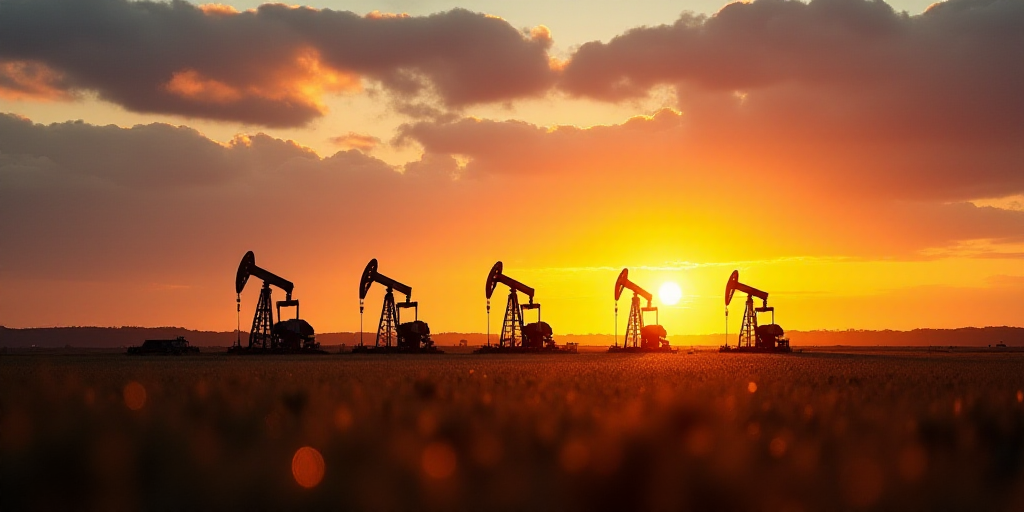Background on Key Figures and Their Relevance
Donald Trump, the President of the United States, has been a significant figure in global politics and energy markets. His recent threats to impose 50% tariffs on goods imported from the European Union (EU) have caused market volatility. Meanwhile, the Organization of the Petroleum Exporting Countries (OPEC) and its allies, known as OPEC+, play a crucial role in determining global oil supply levels.
Oil Price Fluctuations and Market Factors
On the trading day, oil prices plummeted after Trump’s tariff threats but later recovered. The Brent crude oil benchmark for July delivery increased by 0.53% to $64.78, while the West Texas Intermediate (WTI) for July delivery rose by 0.54% to $61.53.
Andy Lipow from Lipow Oil Associates summarized the market situation for AFP, stating that “the oil market is caught between two fires.” The factors weighing on prices include the impact of tariffs on oil demand growth and OPEC+’s over-the-expected barrel increases in May and June.
OPEC+ Production Decisions and Market Uncertainty
The upcoming week will see OPEC+ decide on their July production levels, with conflicting media reports about their plans. Officially, OPEC+ attributes its increases to a balanced market and low global reserves. However, this explanation is met with skepticism, especially considering concerns over demand linked to Trump’s trade war.
Arne Lohmann Rasmussen from Global Risk Management explained that Saudi Arabia, a key OPEC member, aims to pressure cartel members not adhering to production quotas and may also seek to appease Trump, who explicitly asked OPEC for increased production during a Davos video conference.
Geopolitical Factors Supporting Oil Prices
On the other hand, oil prices are supported by concerns that Israel might attack Iran’s nuclear facilities, potentially escalating competition in the Middle East. Arabia Sauditi’s actions and geopolitical tensions continue to shape the oil market dynamics.
Key Questions and Answers
- Who are the key figures mentioned in this article? Donald Trump, President of the United States, and Saudi Arabia, a significant OPEC member.
- What impacted oil prices during the trading day? Trump’s tariff threats against the EU initially caused a sharp decline in oil prices, but they later recovered.
- What factors are weighing on oil prices? The impact of tariffs on oil demand growth and OPEC+’s over-the-expected barrel increases in May and June.
- What are OPEC+’s production decision priorities? OPEC+ aims to maintain a balanced market and low global reserves, but faces skepticism due to demand concerns linked to Trump’s trade war.
- Why are geopolitical factors supporting oil prices? Concerns that Israel might attack Iran’s nuclear facilities, potentially escalating competition in the Middle East.






